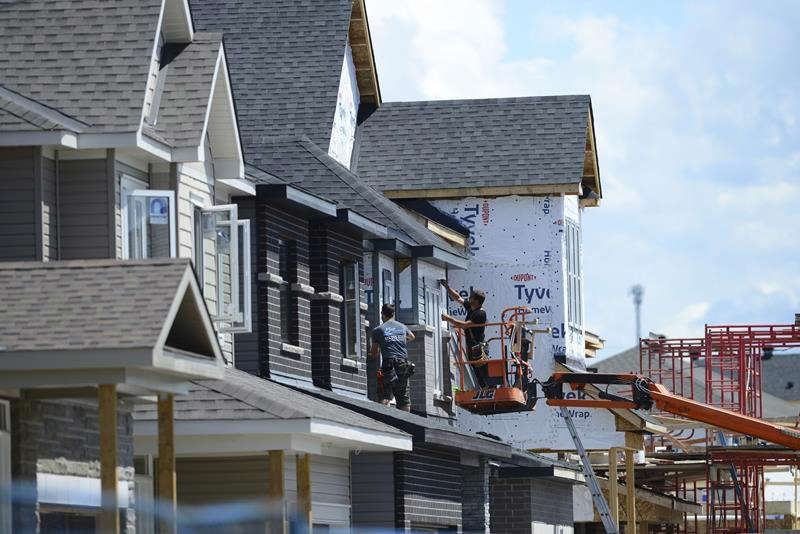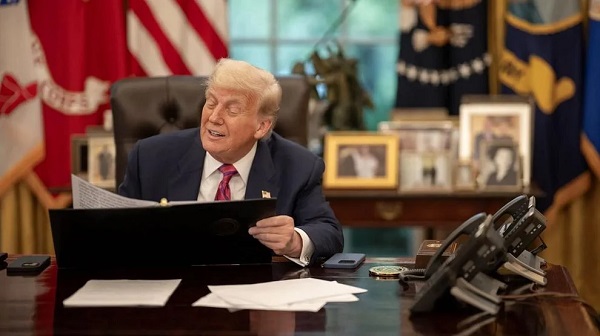Alberta
Addressing affordable homebuilding hurdles

A new Construction Codes Working Group will explore changes to construction codes to help address housing affordability.
As Alberta’s population continues to grow, so does the need for more housing options. That’s why the province has been working to reduce barriers and empower its housing partners to get more shovels in the ground, and get more houses built for Alberta families.
Alberta’s government continues to look at all options to build more homes. To further this work, a Construction Codes Working Group has been created to explore how Alberta’s construction codes can be improved to speed up development while still maintaining the required high quality and safety standards. The working group includes members from government, municipalities and the development community.
“We are leaving no stone unturned in our approach to increase housing options for Albertans. We have already collaborated to streamline some permitting processes, and by continuing to work together we will remove barriers standing in the way of housing options.”
“Albertans need more housing options as the population grows and it’s why we’ve been working to reduce barriers to housing construction. This working group is just another way that our government is working with housing partners and municipalities to accelerate homebuilding across the province.”
Using the expertise and experience of municipal and industry professionals, the Construction Codes Working Group will explore construction code amendments to accelerate the homebuilding process across the province and harness regulatory, municipal and industry expertise to tackle housing development complexities. Examples of code changes the working group may consider include those for secondary suites and single-stair apartments to make housing easier to build.
The Construction Codes Working Group will include representatives from Alberta’s government, the cities of Calgary and Edmonton, the Safety Codes Council, and the Building Industry and Land Development Association (BILD) Alberta. The Safety Codes Council will ensure safety codes officers are trained on any new codes, inspections or approval processes. BILD Alberta will give insight into market conditions and development challenges.
“In the face of unprecedented population growth, we need an ‘all hands-on deck’ approach to build more homes and meet the growing demand. The Construction Codes Working Group unites experts to streamline construction processes while maintaining top safety standards. I look forward to the insights and recommendations from this working group and am confident a collaborative approach will help deliver more housing options for Calgarians.”
“The City of Edmonton is proud to be a member of the new Construction Codes Working Group. As Edmonton continues to experience unprecedented growth and an increased demand for housing, we are eager to explore new and innovative ways to streamline the development process to ensure every Edmontonian has a home.”
On May 1, Alberta formally updated its provincial building and fire codes to align with national codes and allow for improved energy efficiency in housing and small buildings, while still emphasizing consumer affordability. The Construction Codes Working Group will build on this work to address additional pressures and development challenges found in Alberta’s housing market.
“As a member of the Construction Codes Working Group, BILD Alberta is proud to support the development of solutions that balance building code requirements with housing affordability. By collaborating with key stakeholders, we aim to identify innovative, practical changes that prioritize safety, efficiency and accessibility while addressing the pressing housing needs of Albertans.”
Quick facts
- The 2023 Alberta editions of the building and fire codes and the 2020 National Energy Code for Buildings came into force on May 1, 2024.
- The creation of the Construction Codes Working Group supports the goals of Alberta’s Housing Action Plan by looking at ways to cut red tape that are creating delays in affordable construction.
- The 2024 Accessibility Design Guide that was recently released includes detailed information and context to help the public and construction industry understand and apply the provincial building code’s accessibility requirements.
Related information
Alberta
School defunding petition in Alberta is a warning to parents

This article supplied by Troy Media.
A union-backed petition to defund independent schools in Alberta could trigger a wave of education rollbacks across Canada
A push to defund independent schools in Alberta is a warning to every Canadian parent who values educational options.
A petition backed by the Alberta teachers’ union may be the first step toward reduced learning choices across Canada. Independent schools, most of them non-elite and often focused on a specific pedagogical approach, receive partial public funding in Alberta and serve diverse student populations.
The petition, launched under Alberta’s citizen initiative law, could trigger a provincewide referendum if it meets the required threshold set by provincial election law.
If your child isn’t in a standard public classroom, whether they’re home-schooled, in a charter, Francophone, Catholic, or
specialized public program, this petition puts your educational decisions at risk.
Opponents of choices in education have been forthright in their attempts to erode the large and successful range of learning options that most Canadians enjoy. Instead, they seem to be aiming for a single, uniform, one-size-fits-all system with no variation for children’s many learning styles and needs, nor for new teaching innovations.
During last year’s NDP leadership campaign in Alberta, candidate (and current MLA) Sarah Hoffman proposed effectively eliminating charter schools and forcing them to join public school boards.
The current recall effort targeting Alberta Education Minister Demetrios Nicolaides lists “charter-private school” funding as a rationale. There is no such thing as a charter-private school, since charter schools are public and 100 per cent provincially funded.
It’s clear the petition is aimed at restricting or defunding charter schools despite their popularity. More than 15,000 students are enrolled and over 20,000 more are on wait-lists in Alberta.
Alberta isn’t the only place where schooling options are coming under pressure. Yukon’s NDP leader has called for defunding and eliminating the territory’s entire Catholic separate system. Similar arguments exist in Ontario. British Columbia doesn’t have a Catholic school system. Newfoundland had one, but in 1998 merged the Catholic board into the public one.
Going as far back as 2010, provinces including Newfoundland, British Columbia, P.E.I. and Nova Scotia have sought to justify limiting the Francophone schooling options they offer due to high costs and budget limitations.
These provincial actions raise a larger question. Efforts to defund Catholic and Francophone schooling are striking, given that both are constitutionally protected. If, as teachers’ unions argue, even constitutionally protected choices can be defunded, restricted or eliminated, how safe are all the other options, like independent, charter, or microschools that aren’t written into the constitution but excel at producing well-formed, knowledgeable graduates ready for adulthood?
Even specialized programs offered within the public system aren’t safe. Last year, the Calgary Board of Education shut down its all-boys program, saying the space was needed to accommodate general enrolment growth. However, the building was then leased out to a post-secondary institution. In Vancouver, the public board stopped new enrolment in its gifted student program, ending “the only publicly funded option for kids who need an accelerated learning environment.”
If these formal attacks on educational diversity can happen in Alberta, which has long been Canada’s leader in making a wide variety of learning options available, affordable and accessible to families, then it certainly can happen in other provinces as well.
The Saskatchewan Teachers’ Federation has already asked the government to end funding for independent schools. A similar push has surfaced in British Columbia. The claim that independent schools drain resources from the public system is incorrect. Every student who enrolls in an independent school costs the provincial budget less and frees up space, teaching time, and other public school resources for everyone else.
These efforts reflect a zero-sum view of education and a false view that only some schools serve the common good.
A better approach is to expand what’s available. Provinces can support more learning options for families, which means more resources and better results for students, no matter how or where they learn.
We need to pay attention to what’s happening in Alberta and elsewhere. Parents don’t want fewer options to help their children enjoy school and flourish academically or personally. If educational diversity can be rolled back in Alberta, it can be rolled back anywhere.
Canadians who value educational alternatives need to pay attention now—before the decisions are made for them.
Catharine Kavanagh is western stakeholder director at Cardus, a non-partisan thinktank that researches education, work and public life.
Troy Media empowers Canadian community news outlets by providing independent, insightful analysis and commentary. Our mission is to support local media in helping Canadians stay informed and engaged by delivering reliable content that strengthens community connections and deepens understanding across the country
Alberta
Tell the Province what you think about 120 km/h speed limit on divided highways

Alberta’s government is engaging with Albertans on increasing speed limits on rural highways.
Starting Nov. 7, Albertans can share their views on modernizing speed limits on divided highways through an online survey running until Dec. 12. The survey will ask how Albertans view raising the speed limit by 10 km/h on various highways from 110 km/h to 120 km/h.
“Alberta’s government is investigating how to safely increase speed limits on divided highways, and if Albertans support increasing speed limits. We are investing more than $1.5 billion this year alone to improve highway safety and upgrade infrastructure across the province. We want Albertans to be able to drive the speed limit that the highways are designed for. Modern vehicles combined with public awareness mean we can explore higher speed limits.”
The survey will provide Albertans with the opportunity to provide input on which highways they would prioritize having a speed limit increase, their views on restricting commercial trucks from using the far-left lane on highways with three or more lanes and any other feedback that would improve driving experiences on provincial highways.
Following a review of the survey results, Alberta’s government plans to conduct a mini-trial of a 120 km/h speed limit to assess the impacts of higher speed limits on divided highways. The trial will include strong monitoring to assess driving behaviour.
Alberta’s government reminds motorists to slow down and drive to the conditions. Speed limits are set for ideal conditions. When roads are wet, icy or when there is reduced visibility, motorists should slow down.
Quick facts
- Alberta’s provincial highway network includes more than 64,000 lane kilometres of highways, about 11,700 lane kilometres of which are divided.
- The posted speed limits of Alberta’s divided highways range from 100 to 110 km/h, although the posted speed limits on segments passing through cities, towns and First Nation lands can be as low as 50 km/h due to factors such as signalized intersections, pedestrians and local access.
Related information
- The survey is available online.
-

 armed forces1 day ago
armed forces1 day agoIt’s time for Canada to remember, the heroes of Kapyong
-

 Daily Caller2 days ago
Daily Caller2 days agoMcKinsey outlook for 2025 sharply adjusts prior projections, predicting fossil fuels will dominate well after 2050
-

 Business2 days ago
Business2 days agoTrump: Americans to receive $2,000 each from tariff revenue
-

 Business1 day ago
Business1 day agoCarney’s Floor-Crossing Campaign. A Media-Staged Bid for Majority Rule That Erodes Democracy While Beijing Hovers
-

 Agriculture2 days ago
Agriculture2 days agoFarmers Take The Hit While Biofuel Companies Cash In
-

 Housing2 days ago
Housing2 days agoTrump advancing 50-year mortgage to help more Americans buy homes
-

 Frontier Centre for Public Policy2 days ago
Frontier Centre for Public Policy2 days agoNotwithstanding Clause Is Democracy’s Last Line Of Defence
-

 Business14 hours ago
Business14 hours agoLiberals refuse to disclose the amount of taxpayer dollars headed to LGBT projects in foreign countries








